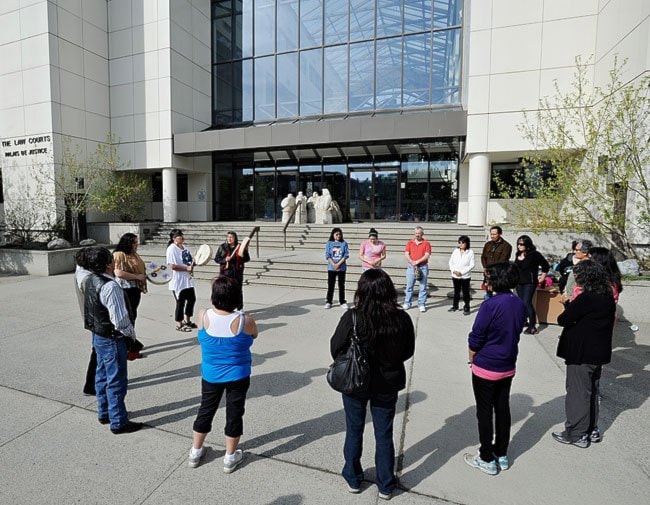The Yukon’s Court of Appeal has ruled the findings from an inquest into the 2008 death of Raymond Silverfox should not have been overturned.
The decision, made public yesterday, reverses a ruling by Yukon Supreme Court Justice Ron Veale last year.
Silverfox died in 2008 after spending 13 and a half hours in the RCMP’s drunk tank, lying in his own vomit and feces.
At a 2010 inquest, overseen by then-coroner Sharon Hanley, the jury of six people heard Silverfox died of sepsis and acute pneumonia, likely from inhaling his own vomit.
The RCMP officers and jail guards did not help. The jury heard recordings of the 43-year-old being mocked by those in charge.
They ruled the death “death by natural causes.”
In the context of an inquest, “natural causes” is a death from a disease of the body or age alone, as opposed to a death caused or accelerated by another person.
Members of Silverfox’s family applied for a judicial review.
Last year, Justice Veale ruled the coroner made mistakes during the seven days of testimony.
He overturned the verdict, but declined to order a new inquest.
The coroner appealed that decision earlier this year.
“Here we are concerned with three deficiencies identified by the judge in his reasons for judgment,” Justice Mary Saunders wrote in yesterday’s ruling, “the speed at which the video recording was played at the inquest, the lack of submissions made by the Silverfox family to the jury, and the inadequacy of the summation, all of them found by the judge to interfere with the ability of the ultimate decision maker - the jury - to perform its function.”
In the end, Saunders, along with justices David Tysoe and Elizabeth Bennett, found that the problems identified by Veale do not amount to unfairness during an inquest.
“The role of coroner is investigative and an inquest is an extension of the investigation, being both investigative and inquisitorial. It is not adversarial and is fact finding rather than fault finding,” a summary of the decision reads.
“This role informs the content of procedural fairness. Given the role of the inquest, the deficiencies do not amount to procedural unfairness, and do not support quashing of the verdict.”
Regarding the video of Silverfox in the police cell, Veale found that by playing the recording on fast forward rather than at least, in part, at real time speed, the coroner made a procedural error.
The appeal judges disagreed.
While acknowledging that Silverfox’s suffering is “difficult to watch” whether on fast forward or real time, Saunders notes the video was available to the jury to watch on their own during their deliberations. She also points out that the Silverfox family, who were represented by a lawyer and could question witnesses during the proceedings, did not complain about the way the recording was presented at the time.
Veale found the inquest proceeding was flawed because of the way the coroner summed up the case, without presenting an analysis of competing theories as to why Silverfox died. He was also critical of the fact that the Silverfox family’s representative was not given a chance to address the jury at the end.
He questioned whether the jury was clear regarding what different verdicts were available to them.
The lawyer representing the coroner argued that Veale treated this part of the inquest too much like criminal court when it came to what is required in a closing summary.
The appeal court agreed.
“I respectfully consider that the judge erred in requiring more of the summation than was provided. It is to be remembered that obtaining a verdict, while important, is only one purpose of an inquest,” Saunders wrote.
“Equally important is the fact of a public airing of the sworn information concerning the death, and the opportunity provided to members of the community as jurors to make recommendations, thereby to diminish the likelihood of recurrence.”
Saunders pointed to the recommendations made by the jury, which included a number directed at the RCMP, as evidence that they understood their role.
“From these recommendations, it is apparent that the jury was alive to the long, untended, and increasingly degrading conditions of Mr. Silverfox’s detention, and addressed its concerns about both those conditions and the behaviour of the guards. The recommendations do not support the judge’s concern that the jury was left at sea on those issues.”
Hanley retired as coroner in 2012.
Contact Ashley Joannou at
ashleyj@yukon-news.com
